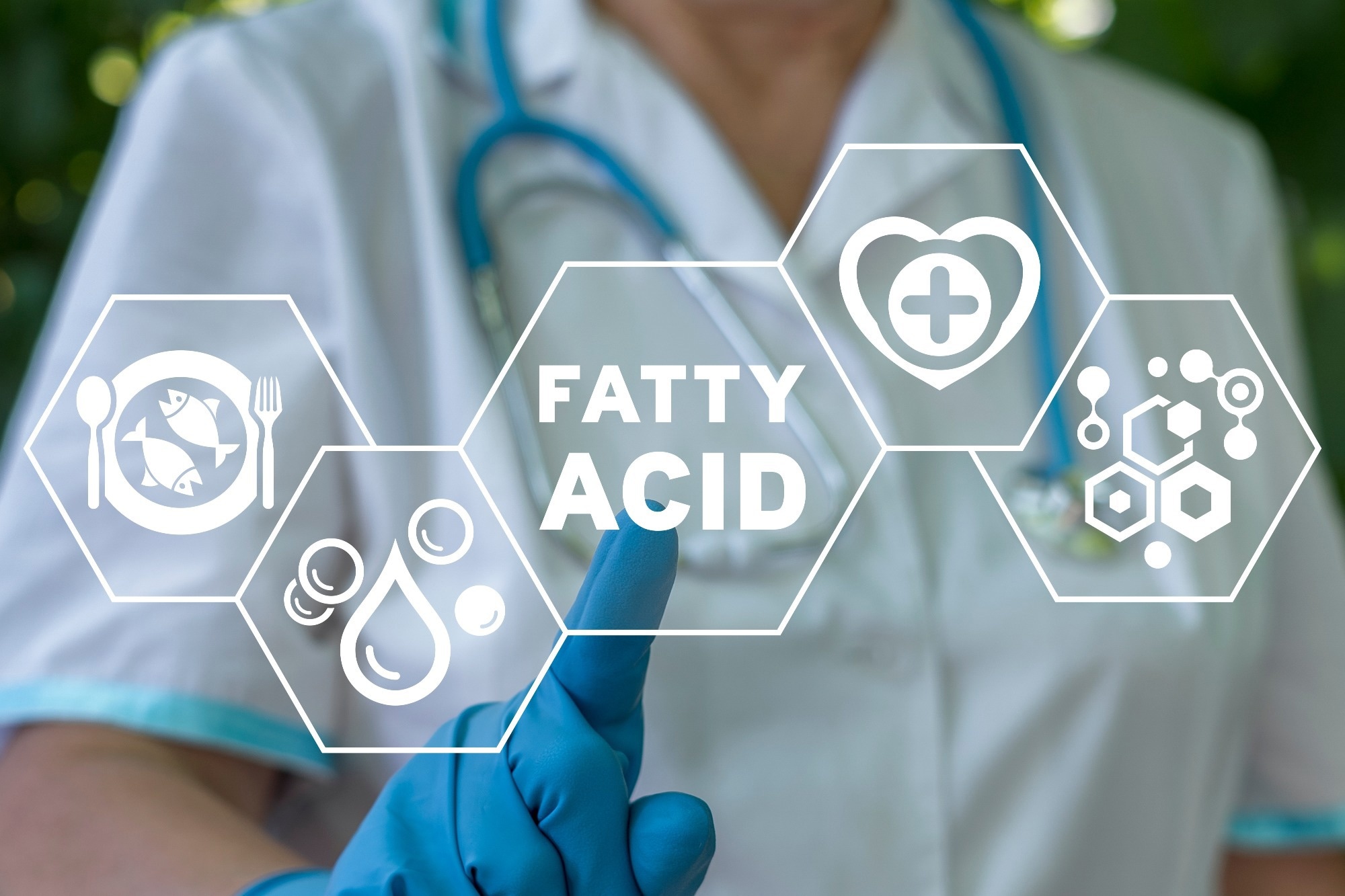Research highlights modest associations between fatty acid consumption and kidney stone prevalence, emphasizing the need for refined dietary strategies.
 Study: Associations between dietary fatty acids and kidney stones. Image Credit: Panchenko Vladimir/Shutterstock.com
Study: Associations between dietary fatty acids and kidney stones. Image Credit: Panchenko Vladimir/Shutterstock.com
In a recent article in Scientific Reports, researchers investigated the association between the intake of dietary fatty acids and the likelihood of kidney stone development among adults in the United States.
Their findings indicate that people who consume more polyunsaturated fatty acids (PUFA), monounsaturated fatty acids (MUFA), and saturated fatty acids (SFA) may have higher odds of developing kidney stones.
Background
Kidney stones have become a growing global health issue, with rising incidence rates impacting both healthcare systems and individuals’ quality of life.
Kidney stone development involves various factors, including genetic predisposition and environmental influences, specifically dietary habits. Addressing these modifiable risk factors is crucial, particularly across developed countries where the prevalence is higher.
Diet plays a significant role in kidney stone formation. Experts universally recommend high levels of fluid intake, while other dietary components have varying effects.
While balanced calcium intake helps prevent certain stones, excessive animal proteins and sodium increase the risk. Diets high in whole grains, vegetables, and fruits can offer protective benefits by altering urinary acidity and reducing stone-forming minerals.
Despite this, research on the link between kidney stones and dietary fatty acid intake remains limited, particularly in large-scale population studies. More research is needed to provide clearer dietary guidelines for kidney stone prevention.
About the study
This study investigates the link between dietary fatty acid intake and the prevalence of kidney stones using data from the National Health and Nutrition Examination Survey (NHANES) from 2007 to 2018.
Researchers examined how PUFA, MUFA, and SFA impact kidney stone risk across various health and demographic subgroups, diabetes status, sex, age, and body mass index (BMI).
Participants’ dietary intake was assessed through 24-hour dietary recall interviews. Logistic regression models analyzed the association between kidney stones and fatty acid intake, adjusting for age, gender, race, energy intake, and other health-related variables. Subgroup analyses explored how these associations varied among different population groups.
Findings
In this study, 30,716 adults were analyzed to explore the link between the variables of interest. Among the participants, 9.51% had a history of kidney stones.
Individuals with kidney stones were generally older, male, and had lower education levels, physical activity, and water intake. They also exhibited higher rates of diabetes, hypertension, smoking, BMI, and energy intake.
The analysis revealed a positive association between increased intake of PUFA, MUFA, and SFA and higher odds of developing kidney stones. In fully adjusted models, every 10-gram daily increase in SFA, MUFA, and PUFA intake raised the odds of kidney stones by 22%, 10%, and 21%, respectively.
Subgroup analyses showed consistent positive associations across different age, sex, BMI, and diabetes status categories. Specifically, individuals with diabetes exhibited a stronger association between SFA intake and kidney stones, suggesting heightened susceptibility.
This may be due to diabetes-related changes in fat metabolism and urinary composition. The associations for MUFA and PUFA showed slight variations, with PUFA demonstrating a stronger effect in males, potentially due to hormonal or metabolic differences.
Specific fatty acids like arachidonic acid were associated with higher risk, while omega-3 fatty acids like docosahexaenoic acid and eicosapentaenoic acid showed protective effects.
These long-chain fatty acids are primarily found in fatty fish and are known for their anti-inflammatory properties and other health benefits, including supporting brain and heart health.
Sensitivity analyses confirmed that including additional dietary characteristics did not change the main findings, emphasizing the role of dietary fatty acids in kidney stone formation.
Conclusions
Overall, the findings from the study indicated that higher intake of these fatty acids was associated with an increased risk of kidney stones across various subgroups, including BMI, sex, age, and diabetes status.
Compared to previous research, this study stands out for its focus on the distinct roles of different fatty acids in kidney stone formation. Unlike earlier studies that examined broad dietary patterns, this research provided more specific insights.
For instance, prior studies observed gender differences in dietary impacts on the development of kidney stones, aligning with the current findings.
Researchers proposed several mechanisms by which fatty acids may influence kidney stones risk. SFAs may impact kidney function and promote stone formation through increased calcium and oxalate excretion. MUFAs, despite their general cardiovascular benefits, could affect kidney stones through their roles in metabolism and inflammation.
The balance between omega-3 and omega-6 PUFAs was also significant, with a higher omega-6 to omega-3 ratio linked to increased risk.
While the study benefits from a large, diverse sample and comprehensive analysis, it is limited by its cross-sectional design and reliance on self-reported dietary data.
Further longitudinal research is needed to confirm these findings and inform dietary recommendations for kidney stones prevention.




